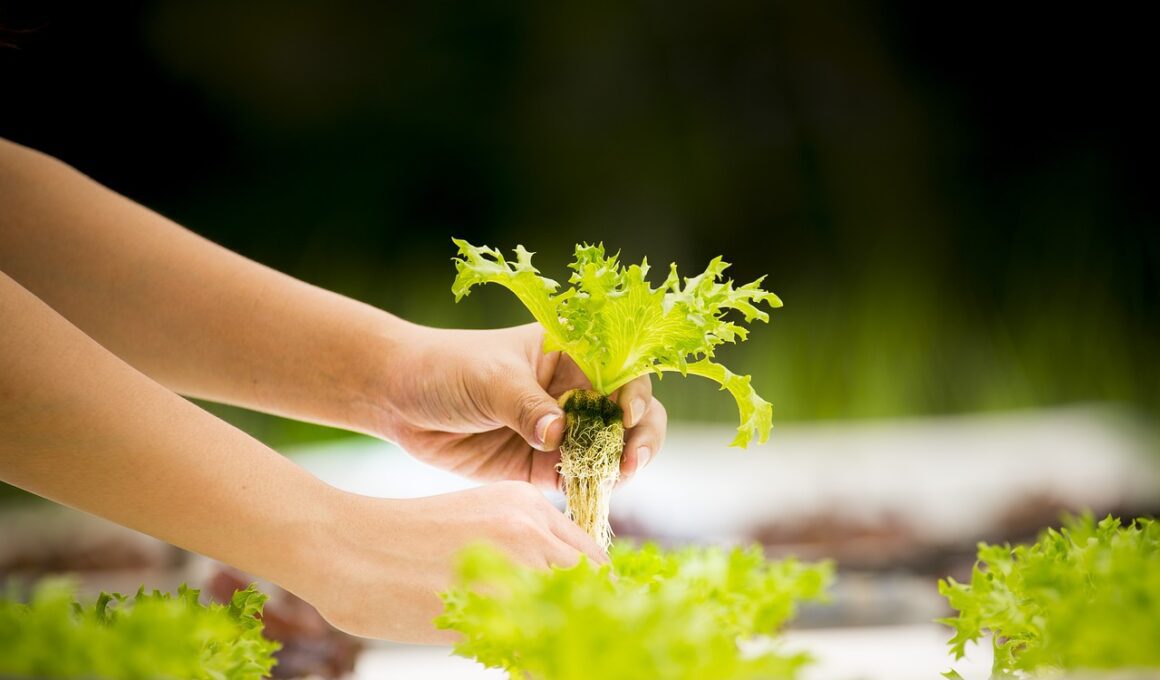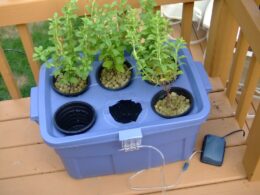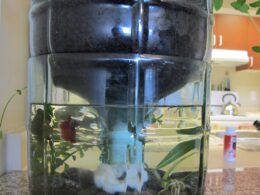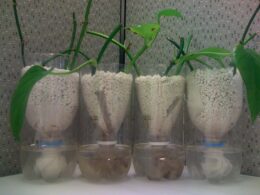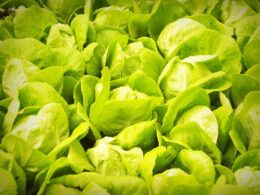Are you considering starting a hydroponic garden but wondering if you really need clay pebbles? Hydroponics is a form of gardening that relies on a growing medium instead of soil, and clay pebbles are one of the most popular options. However, whether or not you need them depends on several factors, including the type of plants you want to grow, your budget, and your personal preferences.
In this article, we’ll explore the different types of hydroponic growing mediums and the pros and cons of using clay pebbles. We’ll also look at some alternatives to clay pebbles and discuss the factors you should consider when choosing a growing medium.
By the end of this article, you’ll have a better understanding of whether or not clay pebbles are right for your hydroponic system and how to choose the best growing medium for your needs.
Understanding Hydroponic Growing Mediums
You’ll discover some exciting options for growing your plants without soil, using a range of materials that offer unique benefits and challenges. One of the most popular growing mediums is clay pebbles, which are porous and lightweight. However, they’re not strictly necessary for hydroponic gardening.
In fact, there are plenty of alternatives that can work just as well, if not better. One such option is coco coir, which is made from the husks of coconuts. It’s a renewable resource that’s easy to work with, and it offers a number of benefits over clay pebbles.
For example, it retains moisture well and provides excellent aeration for plant roots. It’s also pH neutral, so you won’t have to worry about adjusting the pH of your nutrient solution. Overall, coco coir is a great choice for hydroponic gardening.
Another popular choice for hydroponic growing medium is a mix of rockwool and perlite. Rockwool is made from molten rock that’s spun into fibers, while perlite is a volcanic glass that’s heated until it expands. Together, they create a lightweight and porous growing medium that provides excellent drainage and aeration.
Rockwool is also pH neutral, while perlite is slightly alkaline, which can help to balance the pH of your nutrient solution. With so many benefits, it’s easy to see why rockwool and perlite are a popular choice for hydroponic gardening.
When it comes to hydroponic growing mediums, there are plenty of options to choose from. While clay pebbles are a popular choice, they’re not strictly necessary for hydroponic gardening. Alternatives like coco coir and rockwool and perlite offer a range of benefits that can help your plants thrive, while also being easy to work with.
So, don’t be afraid to experiment and find the growing medium that works best for your plants.
The Pros and Cons of Using Clay Pebbles
Using clay pebbles in your hydroponic system has its advantages and disadvantages, and it’s important to weigh them both before deciding if they’re right for you.
One advantage is their durability. Clay pebbles can last for multiple growing cycles and don’t break down easily, making them a cost-effective option in the long run.
Another advantage is their efficiency. Clay pebbles provide excellent drainage and aeration, allowing the roots to breathe and preventing water from pooling and causing root rot.
On the other hand, the use of clay pebbles can have an environmental impact. They are mined from the earth and require energy to transport, adding to the carbon footprint of your hydroponic system. Additionally, when it’s time to dispose of them, they can’t be recycled and will end up in a landfill.
Another disadvantage is that they can be heavy and difficult to handle, which can make setup and maintenance of your hydroponic system more challenging.
When deciding whether or not to use clay pebbles in your hydroponic system, consider the trade-offs between their durability and efficiency versus their environmental impact. Ultimately, the decision is yours based on your priorities and values.
There are other hydroponic growing mediums available, such as coconut coir or perlite, that may be more sustainable and easier to handle. Do your research and choose the option that aligns with your goals for your hydroponic system.
Is a Pump Necessary for Hydroponic Systems?
Hydroponic systems enable growing hydroponics without a pump, but it depends on the setup. While pumps are typically used to circulate nutrient-rich water and oxygen to the plant roots, alternative methods like the wick system or deep water culture can be employed. However, having a pump offers benefits such as ensuring proper nutrient distribution and preventing root suffocation.
Alternatives to Clay Pebbles
Looking for more sustainable and easier-to-handle options for your hydroponic system? Check out these alternatives to clay pebbles! While clay pebbles are a popular choice among hydroponic growers, there are other options that can provide similar benefits without the environmental impact.
One alternative to clay pebbles is coco coir. This versatile material is made from the fibrous husk of coconuts and can be used as a standalone growing medium or mixed with other materials like perlite. Coco coir is pH neutral, retains water well, and is resistant to disease and pests. It also has a high porosity, which allows for good drainage and oxygenation of the roots.
Another option for hydroponic growers is perlite mixtures. Perlite is a lightweight volcanic glass that’s expanded and heated to create a porous material. When mixed with other materials like vermiculite, coconut coir, or peat moss, it can create a well-draining and aerated growing medium. Perlite mixtures are pH neutral, retain moisture well, and help prevent overwatering. They’re also reusable and can be sterilized between growing cycles.
Incorporating these alternatives into your hydroponic system can provide similar benefits to clay pebbles while also being more sustainable and easier to handle. Whether you choose coco coir or perlite mixtures, you can feel good knowing that you’re making a positive impact on the environment while growing healthy and thriving plants.
Factors to Consider When Choosing a Growing Medium
When choosing a growing medium, it’s important to consider factors such as pH balance, water retention, and resistance to pests and diseases. pH levels are crucial as plants require a specific range to absorb nutrients effectively. Nutrient absorption is also affected by the type of growing medium used. Some mediums, like clay pebbles, have high porosity and allow for excellent oxygenation, but may not retain water well.
Water retention is another important factor to consider. Some plants require more water than others, and the growing medium should be able to hold onto enough water to meet their needs. However, over-saturation can lead to root rot or other issues, so it’s important to find a balance. Resistance to pests and diseases is also important. Certain mediums may attract pests or harbor diseases, which can harm your plants and compromise your entire crop.
To help you choose the best growing medium for your hydroponic setup, consider the following table:
| Growing Medium | pH Levels | Water Retention | Resistance to Pests and Diseases |
|---|---|---|---|
| Clay Pebbles | Neutral | Low | High |
| Rockwool | Acidic | High | Medium |
| Coconut Coir | Neutral | High | Medium |
| Perlite | Neutral | Low | Low |
Remember to choose a growing medium that will provide the optimal pH levels and water retention for your plants, while also being resistant to pests and diseases. By considering these factors, you’ll be able to create a safe and healthy environment for your hydroponic garden to thrive.
Conclusion: Choosing the Right Growing Medium for Your Hydroponic System
To ensure the success of your hydroponic system, it’s important to choose the appropriate growing medium that meets the specific needs of your plants. While clay pebbles are a popular choice, they’re not always necessary for every hydroponic setup. Factors such as the type of plants you’re growing, the size of your system, and your budget should all be considered when selecting a growing medium.
If you’re just starting out with a small hydroponic system setup, you may want to opt for a more affordable growing medium such as rockwool or perlite. These options are lightweight and easy to work with, making them ideal for beginners.
However, if you’re looking to grow larger plants or have a more advanced system, clay pebbles may be a better choice. Keep in mind that while they may be more expensive, they can also provide better drainage and aeration for your plants.
Cost analysis is an important factor to consider when choosing a growing medium for your hydroponic system. While clay pebbles may seem like the top choice for many growers, they can also be quite expensive. If you’re on a tight budget, it’s important to weigh the cost of the growing medium against the benefits it will provide for your plants. Ultimately, the decision of whether or not to use clay pebbles will depend on the specific needs of your hydroponic system and the plants you’re growing.
Frequently Asked Questions
How do clay pebbles compare to other hydroponic growing mediums in terms of cost and availability?
When it comes to choosing a hydroponic growing medium, cost and availability are important considerations. Clay pebbles are a popular choice, but how do they compare to other options?
Well, in terms of cost, clay pebbles can be more expensive than some other options like rockwool or coconut coir. However, they’re often readily available and can provide good hydroponic yield.
Additionally, clay pebbles have a low environmental impact, as they’re made from natural clay and are reusable. Overall, while clay pebbles may not be the cheapest option, they’re a reliable choice that can offer decent yields and a low environmental footprint.
Can clay pebbles be reused, and if so, how many times?
Clay pebbles are a popular hydroponic growing medium because of their ability to retain water and provide aeration to plant roots. But did you know that clay pebbles can be reused multiple times? This makes them a more environmentally-friendly option compared to other hydroponic growing mediums that need to be replaced after each use.
By reusing clay pebbles, you can save money and reduce your impact on the environment. To reuse clay pebbles, simply clean them with water and a mild detergent to remove any plant debris or residue. Then, sterilize them by soaking them in a solution of hydrogen peroxide and water for a few hours.
Once they’re dry, they’re ready to be used again in your hydroponic system.
What is the ideal pH range for a hydroponic system using clay pebbles as the growing medium?
To achieve optimal growth in a hydroponic system using clay pebbles as the growing medium, it’s important to maintain a consistent pH range.
Benefits of pH control include improved nutrient uptake and overall plant health. Fluctuations in pH can have negative effects on plant growth, including stunted growth and nutrient deficiencies.
It’s recommended to keep the pH range between 5.5-6.5 for most hydroponic plants using clay pebbles. Monitoring and adjusting pH levels regularly will ensure the best growing conditions for your plants and a successful harvest.
Remember, maintaining a stable pH range is essential for ensuring the safety of your plants and getting the most out of your hydroponic setup.
Do clay pebbles require any special maintenance or cleaning to prevent mold or fungus growth?
Preventing mold growth is important for maintaining a healthy hydroponic system using clay pebbles. Regular cleaning techniques can help to prevent the growth of mold or fungus in your system.
It’s recommended to clean your clay pebbles once every 3-6 months to remove any buildup of debris or organic matter. To clean your pebbles, simply rinse them thoroughly in water and then soak them in a solution of hydrogen peroxide and water for 24-48 hours. This will help to kill any bacteria or fungi that may be present.
After soaking, rinse the pebbles again and they will be ready for use. By following these simple cleaning techniques, you can ensure a healthy and productive hydroponic system.
Are there any specific crops or plants that perform better in a hydroponic system using clay pebbles compared to other growing mediums?
When it comes to choosing a growing medium for your hydroponic system, clay pebbles can be a great option. They provide excellent drainage, which can prevent root rot and other issues caused by over-watering. However, they can also be more expensive than other options and require careful cleaning to prevent mold and fungus growth.
If you’re looking to grow tomatoes in your hydroponic system using clay pebbles, there are a few best practices to keep in mind. Make sure your pH and nutrient levels are properly balanced, and consider using a trellis or other support system to keep your plants upright as they grow.
With a little care and attention, you can enjoy a bountiful harvest of delicious, home-grown tomatoes using clay pebbles in your hydroponic system.
Conclusion
So, do you need clay pebbles for hydroponics? The answer is no, you don’t.
While clay pebbles are a popular choice for hydroponic growing mediums, there are many alternatives available. It really comes down to what works best for your specific setup and plants.
When choosing a growing medium for your hydroponic system, there are several factors to consider, such as water retention, pH levels, and aeration. Ultimately, the goal is to provide your plants with the optimal environment to grow and thrive.
So, whether you choose to use clay pebbles or another medium, make sure to do your research and choose the one that suits your needs best.
Happy growing!





